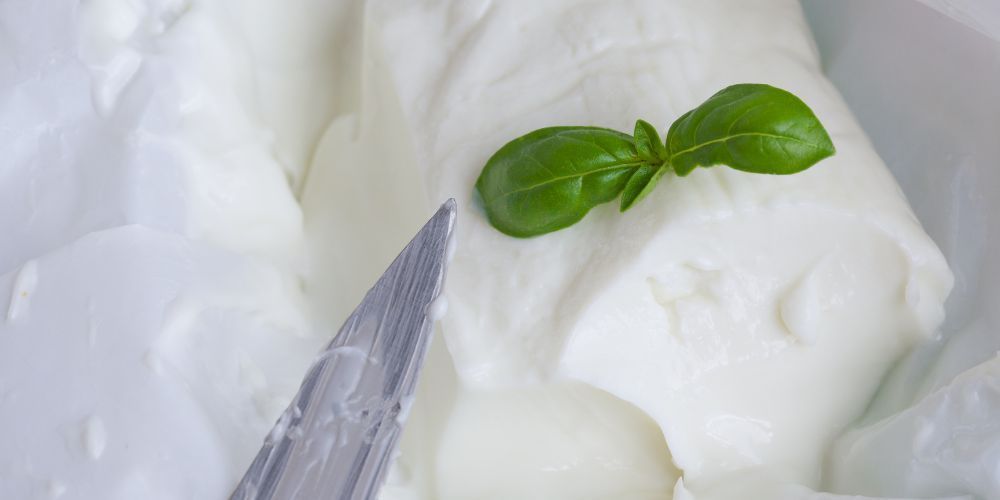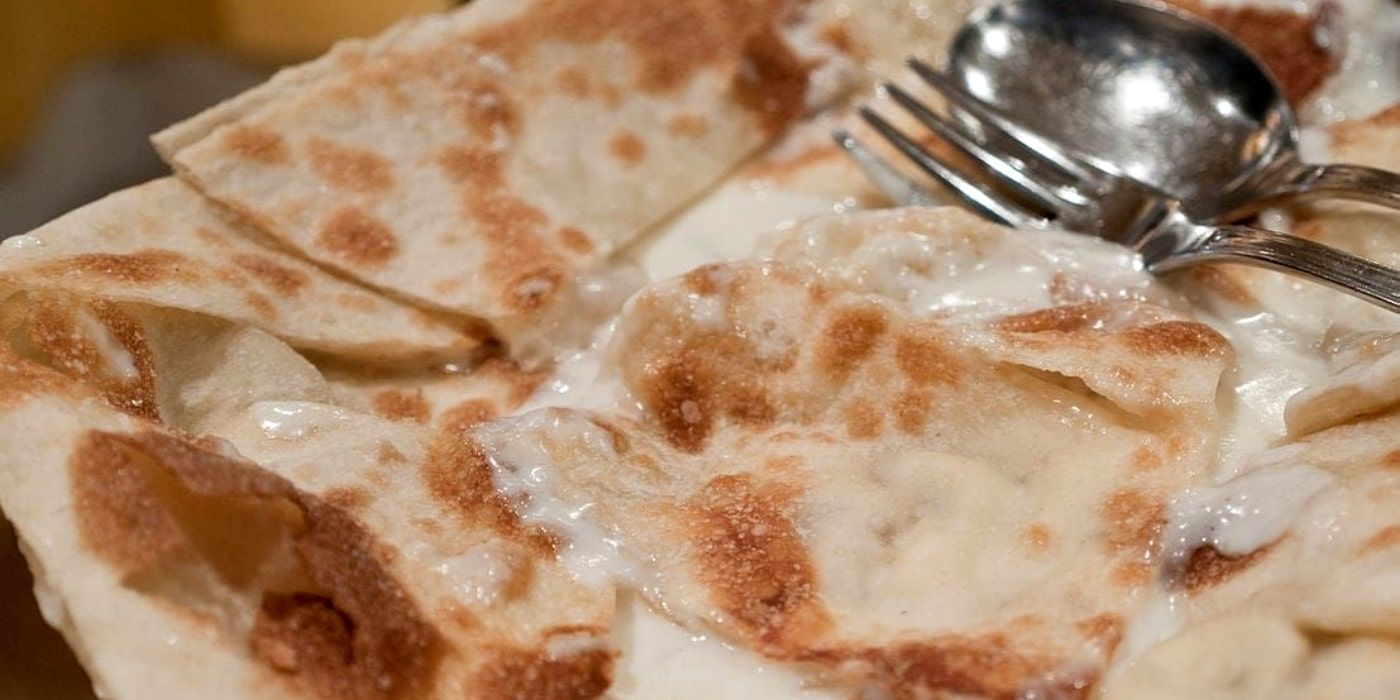The focaccia from Recco, but also from Camogli, is a delicacy that enjoyed by seafarers and not only.
The focaccia with cheese, very thin, slightly golden from the colors of the wood oven, overflowing with creamy dairy products, cut into rhombuses; if you come to Liguria, you cannot to taste such a delicious specialty, you can eat it instead of pizza, consume it as an aperitif, as a first course or for second course or single dish.
Cheese focaccia from Recco is a regional recipe that has been awarded the PGI mark and is considered original only when it is produced in Recco, Sori, Camogli and Avegno, filled with soft cow's milk cheese and baked in the oven.
Focaccia di Recco: ingredients

In the recipe you will find, the cheese used is stracchino, but if you prefer a stronger taste you can use prescinseua.
We proceed with:
-200 g durum wheat flour
-1/ 2 glass of oil
-250 g stracchino cheese
-salt
-water to taste (just enough)
Preparing the cheese focaccia from Recco: how to proceed
.jpg)
Knead the flour with half the oil and add a little lukewarm water until a soft dough is obtained. Make a loaf and leave it to rest for an hour in a bowl covered with a cloth.
After an hour, knead it into a loaf and let it rest for another 5 minutes.
Shape two thin sheets of dough using a rolling pin and lift them on the backs of your hands in a circular motion to enlarge them.
Grease a baking tray or the oven tray well, roll out the first sheet and distribute small pieces of stracchino cheese on top, torn with your hands at a small distance from each other.
Cover with the other sheet, press the edges together with your fingers and flatten any pieces of stracchino that are too large, then prick the sheet with a fork.
Grease the surface with oil and sprinkle with salt.
Put the focaccia in a hot oven (300 degrees) for 8/10 minutes.
Serve in square slices.
Does the delicious cheese focaccia come with the Saracens or is it modern?
.jpg)
This dish as old as Saracens or is it a relatively modern dish, a variation of the ancient focaccia "a fugassa" how to say in Genoese: dough and oil and then varied with olives, onions, potatoes and precisely cheese?
Historical documentation submitted to apply for European protection tells that this product already existed in Roman times, it is mentioned, in fact, by Cato in "De re rustica" as "scripilita cum caseo sine mille"; in Liguria, this product, dates back to the time of the Third Crusade. A document from 1150 mentions cheese focaccia as a dish that was offered to Crusaders leaving for the Holy Land.
It is an ancient dish that originated at the time of the Saracen invasions that, day and night, threatened the coasts of Liguria, and the people fled to the mountains with their household goods: a few forms of cheese or “formaggette”, it sufficed, then, to knead some flour, add cheese and the dish was ready. Before formaggette, however, was used prescinseua or prescinsola that is giuncata, today it is made with stracchino.
Che cos’è la prescinseua
.jpg)
Prescinseua is a cheese made from cow's or sheep's milk with the addition of salt and belongs to the oldest traditions of Liguria and, until the first half of the twentieth century, was part of food habits.
From November to May, in fact, for the people of the Ligurian coast, was the dairy season; shepherds with their flocks went down towards the sea from the inaccessible valleys of the countryside and sell prescinseua or giuncata. Women carried containers with this precious food, on the head and the giuncata was very carefully transferred with the characteristic metal paddle from the bucket to the cup. It was tasted seasoned with its own whey, copiously sprinkled with sugar or rose syrup, and it could even be eaten by children.
Today it is used as an ingredient in typical Ligurian dishes: in pansoti, pesto, stuffed vegetables, and especially in savory pies, the most famous is the Pasqualina pie.
If, as is often the case, there may be doubts about the antiquity of the recipe, there are none about the location: the eastern Ligurian region, particularly Recco, because "the secret is in the water, which in Recco is not polluted, in the wood-fired oven, and in the type of cheese." In the areas of Imperia, however, instead of cheese they used tomatoes as in Nice and Provence, and it is called, still today, pizza all'Andrea.
About the author
Written on 23/06/2023



Fiorella Gandini
Want to bake the original Recco cheese focaccia? Follow the recipe and you will bake a real treat.